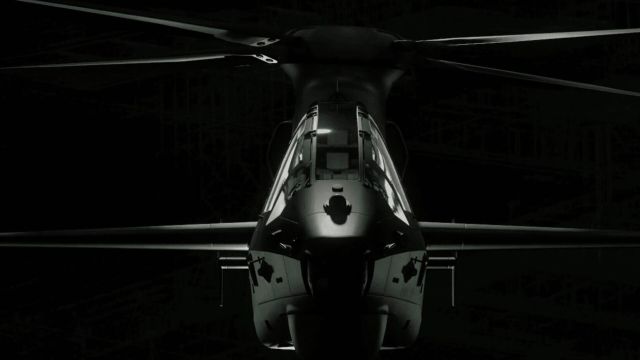The US Army, having studied the experience of its own, closes the program of a promising helicopter
MOSCOW, Feb 14 — RIA Novosti, Andrey Kotz. The United States has abandoned the development of a promising attack reconnaissance helicopter FARA (Future Attack Reconnaissance Aircraft), which has already spent two billion dollars. Military analysts monitoring the course of the armed conflict in Ukraine have concluded that such equipment simply will not be needed. This has happened before. Why expensive defense programs are being closed — in the RIA Novosti article.
The Ukrainian experience
The FARA project was launched in 2018. The Pentagon needed a reconnaissance and strike vehicle to replace the OH-58 Kiowa Warrior helicopter from the Vietnam War. It was decommissioned in 2016, and since then the tasks of the rotorcraft scout have been performed by the heavier and more expensive AH-64E Apache, operating in conjunction with the Shadow UAV.
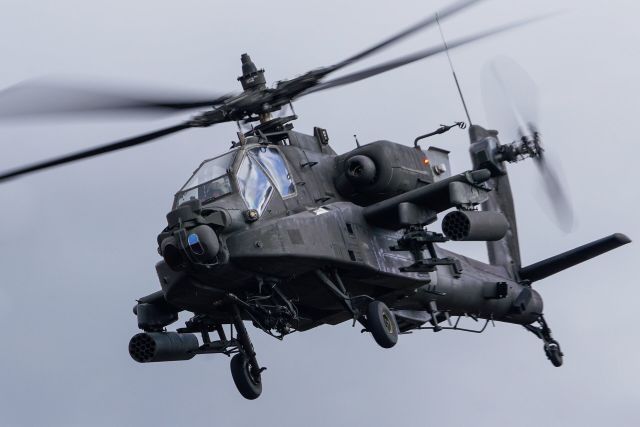
AH-64 Apache helicopter at the Summer Shield XIV international military exercises in Latvia
Image source: © Sputnik / Sergey Melkonov
The contract was claimed by Raider X from Sikorsky and 360 Invictus from Bell concern. The three-dimensional Invictus model was shown to journalists in 2019. It was based on the Bell 525 Relentless civilian transporter, which accelerated to 306 kilometers per hour during tests.
The car turned out to be compact. The engine was created by General Electric as part of the Turbine engine program — GE T901. The Apache architecture was preserved, but the power was increased by 50 percent. Another feature is a pair of wings, which at certain speeds provide up to half the lift. The armament is hidden in the fuselage, which improves aerodynamics and reduces radar visibility.
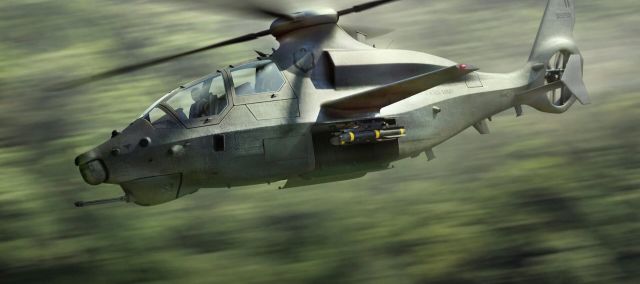
Bell 360 Invictus Reconnaissance and Attack Helicopter
Image source: © Photo : Bell Helicopters
Raider X has a scheme known as Sikorsky X2. The load—bearing system with two coaxial screws of opposite rotation with a diameter of 12 meters provides lifting and flight at low speeds, for high speeds - a pushing screw in the tail. A car with a take-off weight of at least six tons accelerates to 460 kilometers per hour. The practical ceiling is three kilometers.
On paper, both helicopters look more than decent: high-speed, maneuverable, unobtrusive, well-armed, packed with the most modern electronics. But they are completely unsuitable for combat use in an armed conflict against an enemy close in strength. The Pentagon, having carefully studied the fighting in Ukraine, came to the conclusion that these vehicles are too vulnerable to air defense.
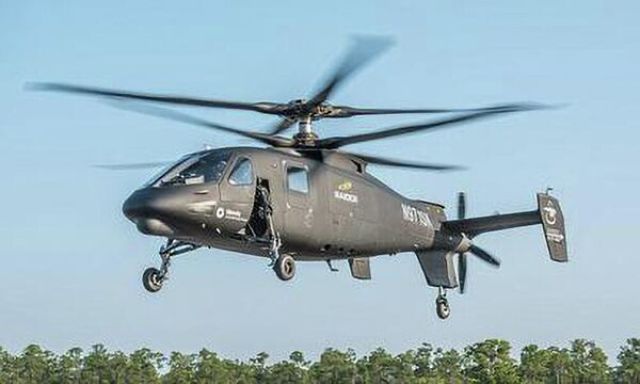
Sikorsky S-97 Raider
Image source:
"Unmanned aerial vehicles with powerful sensors and weapons are more versatile and inexpensive,— explains U.S. Army Chief of Staff General Randy George. — Helicopters and the lives of the crew are too valuable to risk. Drones are being massively used by both sides of the conflict in Ukraine. The methods of conducting aerial reconnaissance have changed dramatically. Now the army that manages to integrate units with UAVs into its structure will have the advantage."
Too fancy
About two billion dollars were spent on the dead-end FARA program. This is relatively small. The previous project cost the American taxpayers 7.9 billion. We are talking about the RAH-66 Comanche stealth helicopter, which first took to the air in January 1996. Two prototypes were built, but the project was curtailed in 2004. The car turned out to be too expensive, difficult to maintain and overly sophisticated for expeditionary operations in third world countries.
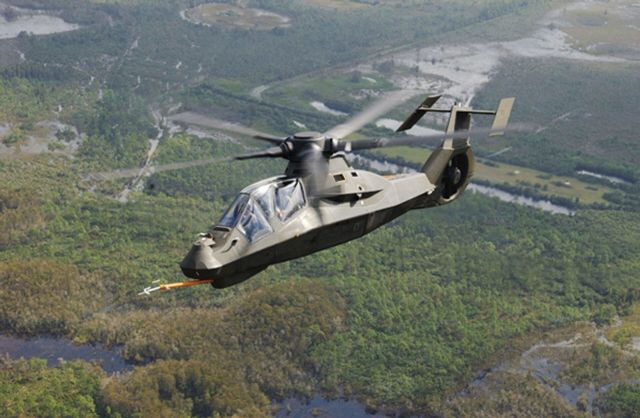
RAH-66 Comanche reconnaissance and Combat helicopter
Image source: CC0 / US Army /
General Dynamics developed the promising XM2001 Crusader self-propelled howitzer in the 1990s. The ACS was packed with the most advanced electronics at that time. The crew's workplaces were equipped with a complex of radio-electronic navigation equipment, calculation of guidance angles, monitoring the condition of machine units, and so on. The firing range of a high-explosive fragmentation projectile is 40 kilometers.
The prototype was tested at the end of 1999 and fully confirmed the design characteristics. It was planned to adopt Crusader by 2008, but in May 2002, the Pentagon announced the closure of the program due to its excessive cost. The fact is that each of the serial self-propelled guns XM2001 would have cost the treasury $ 25 million. And the German PzH 2000, only slightly inferior to the Crusader, cost 4.5 million.
But the most ruinous unsuccessful project is Future Combat Systems ("Combat Systems of the Future"), within which a line of eight types of armored vehicles was developed for the US Army — a promising tank, an IFV, an ACS, a self—propelled mortar. We spent as much as $18.2 billion. About a third of the work was completed, but in 2009, President Barack Obama announced the termination of funding due to changes in the defense strategy. The Americans have focused on the fight against terrorism, where such military high-tech is not needed.
"Golden" ships
They also like to waste money in the Navy. The Zumwalt guided missile destroyers were to become universal warships. They were planned to be assigned the tasks of fire support for amphibious assault, strikes with precision weapons on troops and infrastructure, as well as attacks by enemy surface ships. The program started in 2007, when Congress allocated $2.6 billion to create the first two "Zamvolts". In total, the Navy expected to receive 32 ships and meet 40 billion.
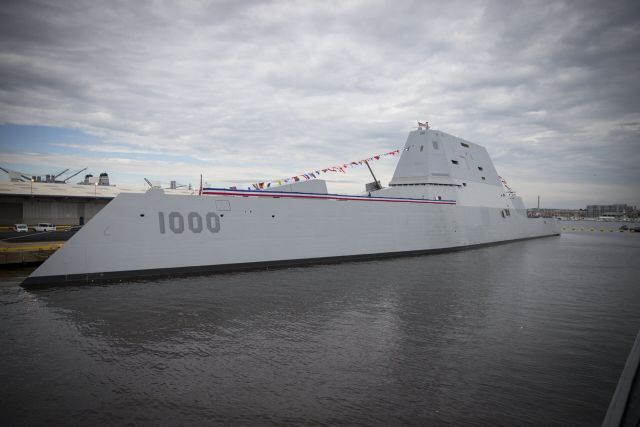
US Navy destroyer of the type "Zumwalt" (Zumwalt)
Image source: © Photo : U.S. Navy / PO2 George Bell
However, the costs were growing rapidly. The order was reduced to 24 destroyers, then to seven. As a result, in 2008, the fleet decided to limit itself to just three ships. Each, according to the latest data, cost the treasury $ 4.4 billion, not counting the cost of maintenance throughout the life cycle (the total amount may exceed seven billion).
And the worst thing happened with the armament for these destroyers — AGS artillery guns of an unconventional active-reactive scheme with a range of 148 kilometers. The LRLAP projectiles used in them, according to Lockheed Martin developers, are so accurate that they are able to "hit targets in the canyons of coastal cities with minimal collateral damage." Everything would be fine, but the price of one ammunition of this type has already exceeded 800 thousand dollars.
For comparison, the Tomahawk cruise missile, tested in dozens of armed conflicts, hits 2.5 thousand kilometers and costs only slightly more — about a million. The Navy has been unsuccessfully searching for an alternative to the "golden" shells for the miracle cannon since 2016, until in 2021 they decided to replace the guns with launchers of promising hypersonic missiles. But it is unknown when they will be mounted, since the hypersonic weapons programs in the United States are frankly stalling.
Thus, the "Zamvolts" were left without guns of the main caliber. Yes, they take 80 cruise missiles on board. However, cheaper Arleigh Burke-class destroyers (1.7 billion) are also capable of this. And if there is no difference, why pay more?
